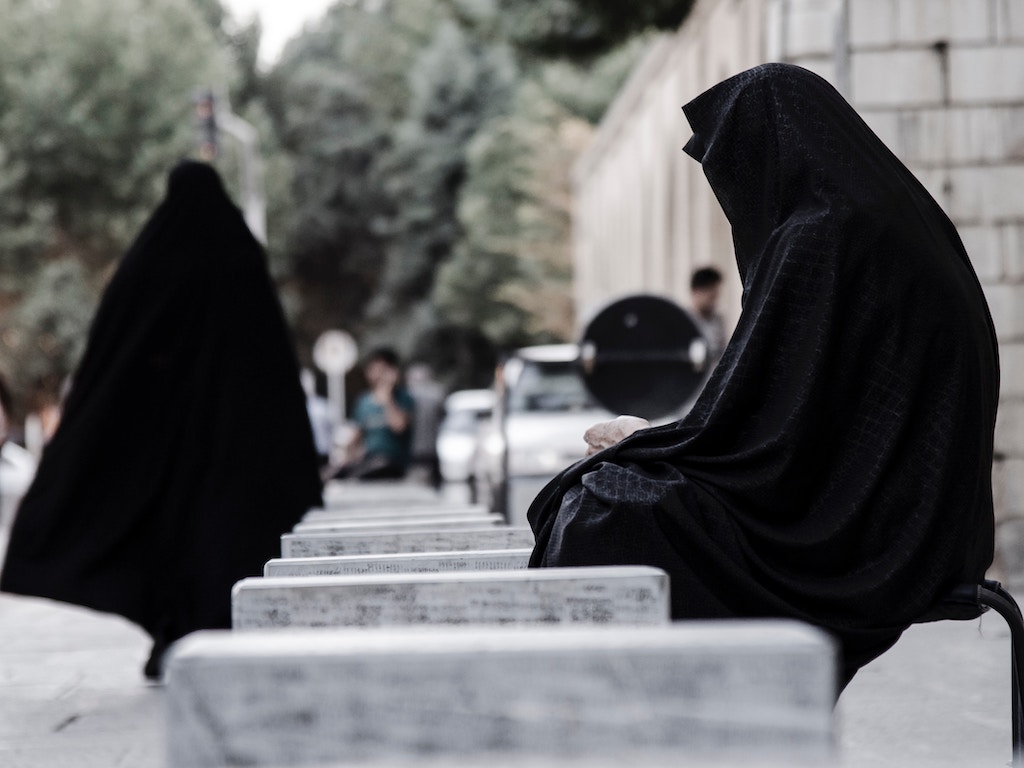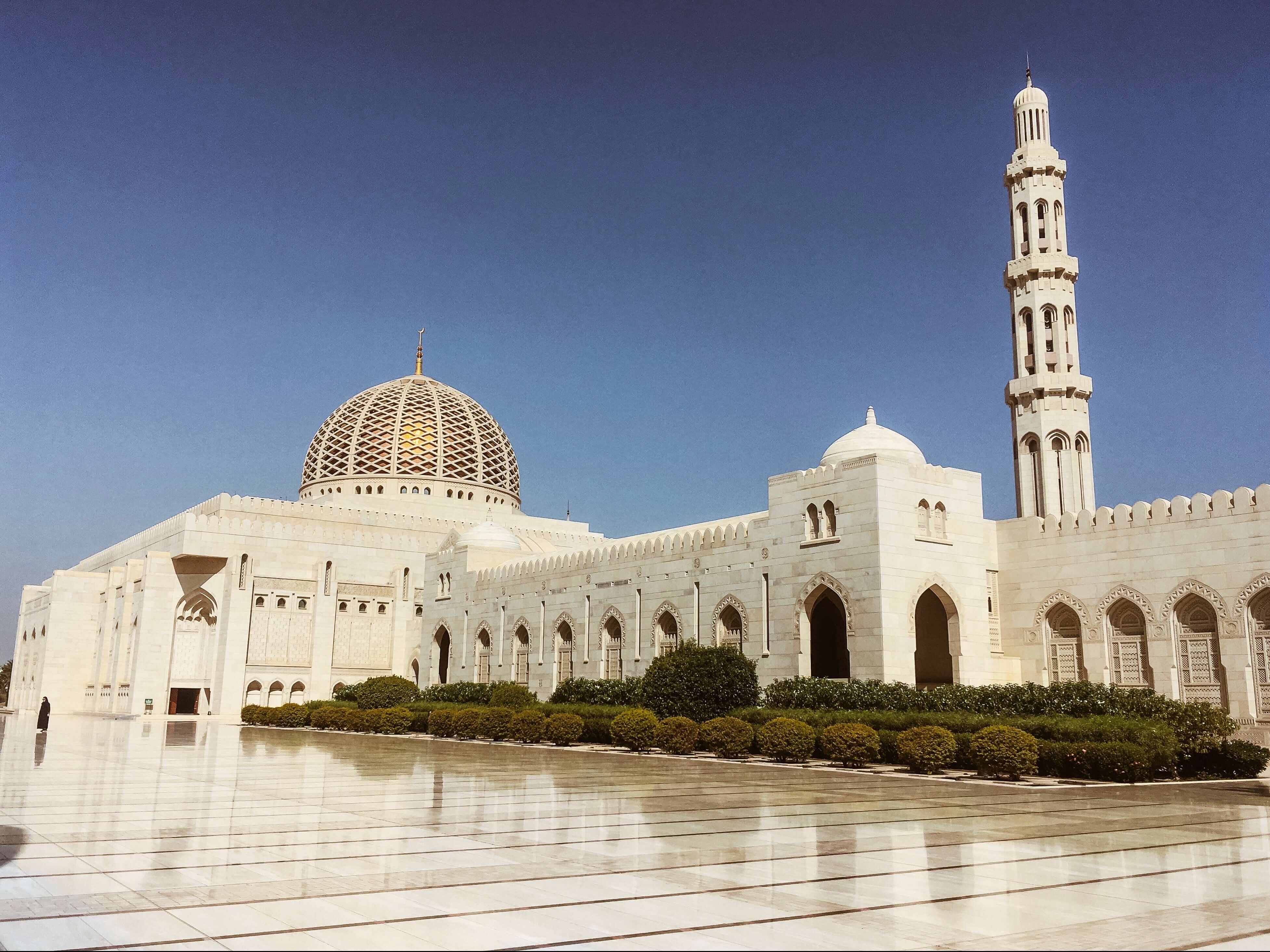Oman’s ruler, Sultan Qaboos bin Said Al Said, is said (see what I did there?) to be to be a huge fan of classical music and the arts. So much so, in fact, that in 2001 he ordered an opera house be built in the capital city of Muscat.
Sultuan Qaboos attended the Opera’s inaugural performance of Puccini’s opera, Turandot, and hasn’t been back to the opera house since. The show must go on though. The Royal Opera House Muscat hosts up to 80 performances every season, including opera, jazz, ballet, pipe organ, Islamic, and traditional performances.
Visiting the opera was a regal experience. Stefan, Tanja, Fletch and myself took advantage of the opportunity to get all dolled up. Fletch and Stefan had matching suits tailored, and went full Rain Man. Tanja flew all the way to Dubai to purchase her evening gown. And I won’t get into my fun shopping trip again…



We had seen the limestone building in the daylight, styled after modern Omani palaces. During the day, the blocky architecture made the opera house look like one built out of Legos, and I mean that in the best way possible. If you saw a 200,000 square foot palace made out of Legos wouldn’t you be impressed? In the dark of the night, the place came to life with dazzling lights causing the whole building to glow like the moon. The entire entrance path was tiled, and reflected the glowing palace like a shimmering lake, making our entrance feel like a waltz through some fairy tale.

We entered through the public entrance, not being important enough to use the VIP entrance and especially not the one reserved only for his majesty and the royal family. Inside, a grand staircase adorned in a red carpet lifted our gazes upwards, towards the arched entryways and Swarovski crystal chandeliers hanging from the ceiling. While the crystals themselves were Austrian, the chandeliers were an Islamic design. The walls were adorned with Turkish motifs from the Ottoman era.




Throughout the lobby, elaborate costumes from past performances were on display. One wall housed a display case full of unique musical instruments, gifted to his majesty by various European countries, and then by his majesty to the Royal Opera House. The whole place had a glorious sense of grandeur about it.


We were there to see Carmen, performed by the prestigious Teatro Colón Buenos Aires. Don José was sung by one of the world’s greatest tenors, José Cura. The show was phenomenal. The music was sung to perfection, and even those in the audience who were less musically-inclined couldn’t help but to be transported on a journey to southern Spain where love was ripe in the air. We were all seduced by Carmen’s gypsy flair and deep, raspy voice, and heartbroken by Don José’s belting duet in the final act.
And the music! You forget just how many melodies in todays movie scores are taken from classical music, but so many of the arias were instantly recognizable. I was left humming the tunes the rest of the week.
The performance was so exceptional, that we all left the opera house saying, “Let’s go again!”
And so again we did go, several weeks later to a performance of La Boheme.
It has been quite some time since I was well-versed in the world of classical music. Believe it or not, I used to play piano and cello at a competitive level, traveling around the country playing in youth orchestras and such. I don’t talk about that much anymore. It’s wasn’t just a hobby that I did in my spare time on the weekends, it was my life until I burned out in high school. I was talented. But I hate bragging, and its hard to explain that I wasn’t just another kid plunking away at piano keys without sounding like I’m bragging, so not many people know that about me anymore.
But suddenly, attending not just one operatic performance, but two, brought it all flooding back and I became quite the critic.
I went into La Boheme knowing that it was going to be a more traditional opera, in the sense that it would be a lot to digest. Carmen was more of a musical, in that it had a fun, easy-to-follow storyline. So if you are an opera connoisseur, don’t brush off my criticisms as just being not properly versed in true opera.
The performance just wasn’t up to par with Carmen though. The vocal talent was lacking, and the acoustics were noticeably off. The first opera troupe from Buenos Aires had projected their voices so perfectly towards the audience with every last note, that any differences in volume were entirely intentional. Our performance of La Boheme was by Opéra de Monte Carlo. They were not quite as proficient at casting their voices towards the audience, and when they turned their heads towards the stage, the singers suddenly sounded very far away. I found it distracting to watch while the music sounded as though the volume were being turned up and down repeatedly.
I’m glad we saw Carmen first, because it left us wanting to attend another performance. I’m not so sure we would have jumped at going again had La Boheme been our first experience with the Royal Opera House Muscat.
If you are ever in Oman, the Opera House does offer tours during the daytime for a small fee, but a much better way to experience the grandeur is to attend a performance. The season goes from September to May, and a calendar of performances can be found on the Opera House’s website.








